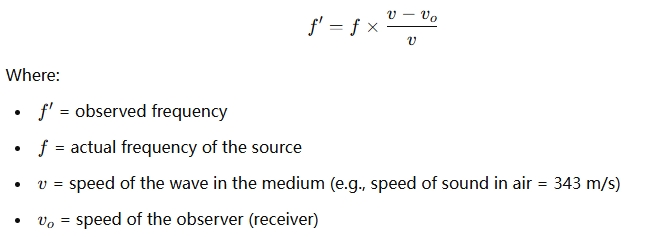Doppler Effect Receding Receiver Calculator
What is the Doppler Effect Receding Receiver Calculator?
The Doppler Effect Receding Receiver Calculator is a tool used to determine the observed frequency of a wave (such as sound or light) when the receiver (observer) is moving away from a stationary wave source. Unlike a moving source, here the observer's motion affects how frequently they encounter wave crests.
Why use it?
- To predict how motion affects perceived frequency when the observer moves away from the source.
- Essential in radar systems, astronomy, medical imaging, and vehicle speed detection.
- Used in Doppler shift analysis to measure the velocity of objects.
How does it work?
The calculator is based on the Doppler Effect formula for a receding receiver:

Since the receiver is moving away from the source, the numerator decreases, causing a lower observed frequency (lower pitch for sound, redshift for light).
When is it used?
- When a person walks away from a speaker and notices the pitch decreases.
- In Doppler radar, when tracking an object moving away.
- In astronomy, to detect objects moving away from Earth (redshift in light).
- In ultrasound imaging, to measure blood flow moving away from the sensor.